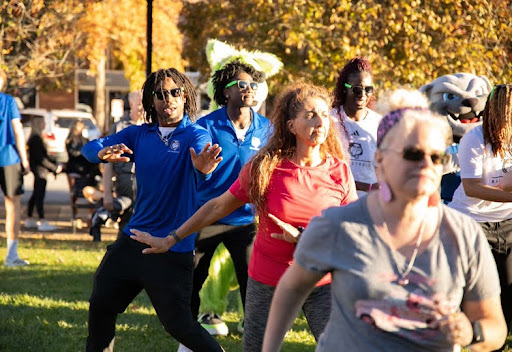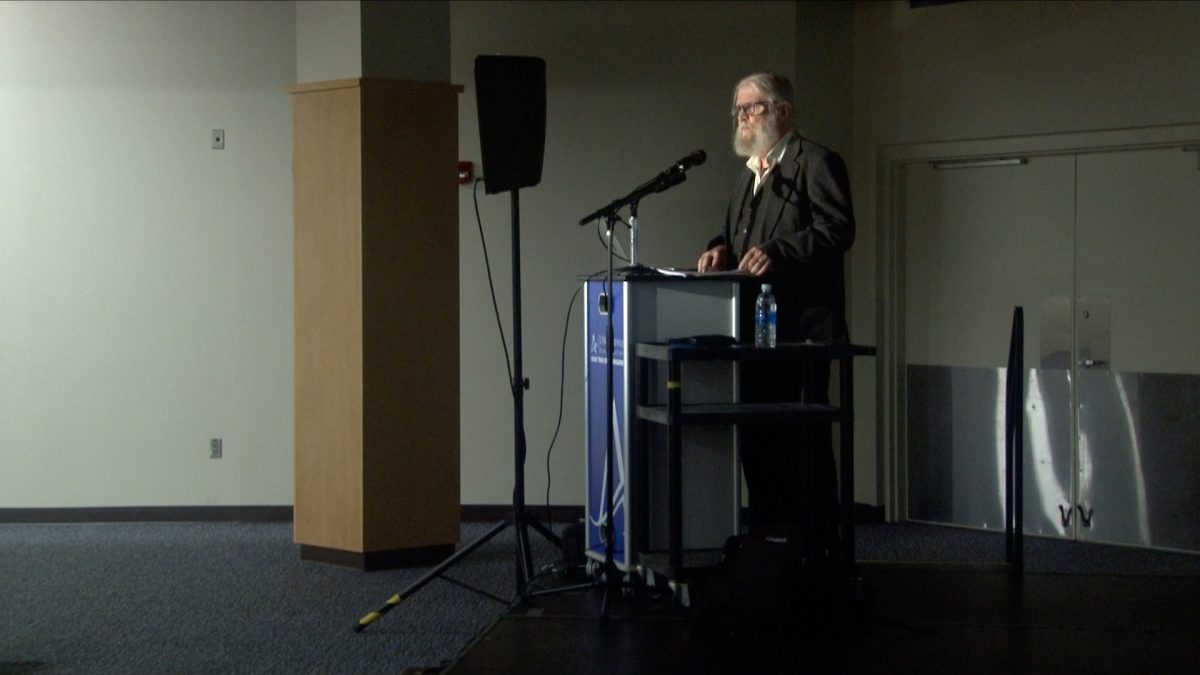
Review by John Mallow, contributor
10/21/2015
The undead are surrounding us. From television and movies, to video games and advertisements, zombies are moving in hordes through our culture. With this in mind, there is one man in particular who deserves a great deal of gratitude for making it all possible, and his name is George Romero.
A zombie film may not seem the most likely candidate for a thought-provoking story, but Romero was able to do so with his Dead trilogy of movies. Granted, he has written and directed more films in the continuity, but true Romero fans give credence to the original three: Night of the Living Dead (1968), Dawn of the Dead (1978) and Day of the Dead (1985).
Critics usually laud Night and Dawn as having more social relevance and impact than Day, but I am not alone in paralleling Day’s story with current world events. Day of the Dead is a film that not only mixes near-flawless zombie makeup effects with a truly frightening story, but beneath its veneer of horror are cultural undercurrents that remain relevant.
No great zombie movie is complete without the added touch of convincing gore and guts. This is where makeup artist, and I mean artist in the truest sense of the word, Tom Savini works his magic with Day of the Dead. Savini, who has worked with Romero on numerous projects, began his tenure creating special effects for Dawn of the Dead.
While Dawn was criticized for the inauthentic quality of its entrails and purple-skinned legions of the undead, Savini absolutely redeems himself with his work on Day.
The first zombie introduced seems to have had the unfortunate luck of meeting the business end of a sledgehammer. His face is a mess of jagged, mangled flesh with plenty of crimson red blood to finish it off, not unlike that of the victim of a car accident whose vehicle possessed a faulty airbag.
In one scene, a disembodied head lies on the floor, furiously snapping its jaws at the humans who stumble across it. A severed head is easy to create for any well-versed maker of special effects, but Savini masters it by giving the chin, mouth, eyes and forehead life-like articulation. Given that in 1985, they were certainly lacking in CGI, Savini did virtually everything a modern production like The Walking Dead would be able to pull off. I wonder what Greg Nicotero would think about that.
Post-apocalyptic-themed movies always have a certain ability to wedge in a warning message. Day of the Dead’s seeming lack of an attempt to tackle any specifically-identifiable issue allows the viewer to assemble their own metaphor out of Romero’s work. It has also aged quite well, overlooking any fashion or hairstyle choices among the characters.
One of the storylines in the movie involves a quarrel over the proper way to deal with the masses of undead. A small group of scientists want to study the physiology of the zombies in order to discover why and how they function, with the intent of creating some sort of remedy. Contrastingly, the soldiers who also occupy the fortified cavern want nothing more than to annihilate the zombies.
My take on this, from a modern perspective, mirrors the current situation the United States faces involving our southern border. The two groups of humans (Democrats and Republicans) are in a stalemate over how to deal with the torrent of zombies (immigrants) who would love nothing better than to infiltrate the survivor’s sanctuary (the United States). While this could seem like a stretch to some, therein resides the flexibility of Day of the Dead. The viewer is given a plot of dirt and a shovel, along with freedom to dig out whatever deeper meaning they might find. Let them just hope nothing undead lies waiting.
For the die-hard Romero fan, his movies are more than just entertainment. Even so, for the casual consumer of the macabre, Day of the Dead can easily be viewed as a straight-forward horror flick.
At its core, a zombie movie’s punch comes from what the zombies are: rabid facsimiles of human beings. The fact that anyone, even your mother or best friend, is susceptible to the throes of an undead conversion means no one is immune.
“But a zombie slowly lumbers around, I could easily get away,” you might say.
Well, eventually you will need to stop for rest and nourishment. A zombie requires nothing but the instinct to kill and some teeth to chew you up. Also in Day, no matter how close the threat of becoming a zombie picnic nears, it seems to take a backseat to the conflict that exists between the groups of survivors.
The fighting between the soldiers and civilian-scientists leads to a second problem; the threat of being killed by your fellow man. Distraught and unhinged from isolation, the characters become enemies to each other just as much as zombies are to them. It is disturbing and unsettling how self-destructive humans become when put in a desperate situation, especially one in which to live means to cooperate effectively.
In the 30 years since Day of the Dead’s release, a plethora of other zombie films have had their time on the silver screen. Many have tried and failed to deliver a worthwhile piece of storytelling that can exist on its own and also stand out in a flooded genre.
This is not to say Romero is faultless. We could all live without the ghastly (no pun intended) Diary of the Dead. What makes him such an adept filmmaker is his ability to continue to create films in the zombie apocalypse genre that, for the most part, don’t become stale. Day of the Dead is but one example of Romero’s brilliance in creating frightening yet engaging stories and Savini’s mastery of all that is fake blood and guts.
Categories:
“Day of the Dead”: Third time’s the charm
October 27, 2015
0
More to Discover


















